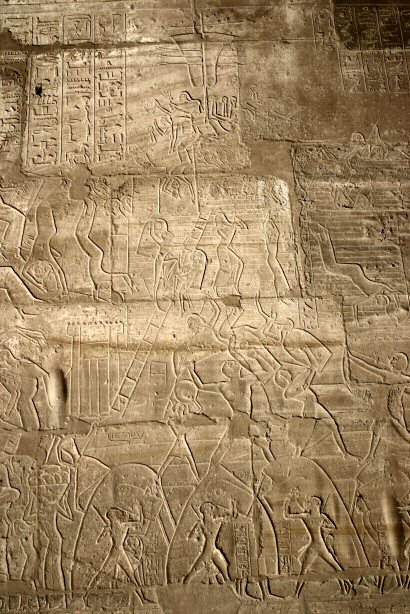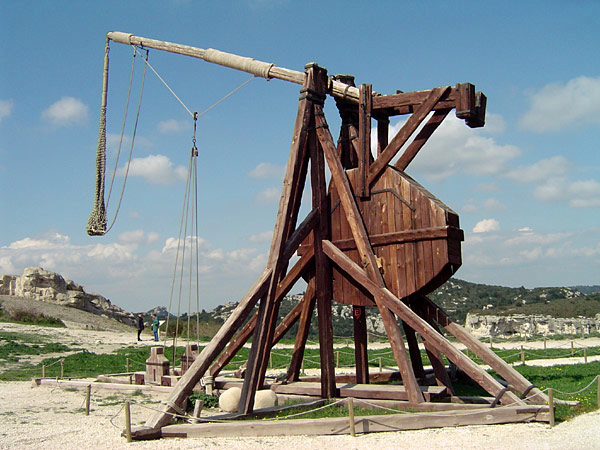|
Siege Of Frankenthal
The siege of Frankenthal was a siege of the Palatinate campaign during the Thirty Years' War. A Spanish army under Gonzalo Fernández de Córdoba besieged the Palatinate fortified city of Frankenthal and its mostly English garrison commanded by Sir John Burroughs, John Burroughs. The siege lasted from 1621 to March 20, 1623, when James VI and I, King James I ordered the city to surrender. Background In the early seventeenth century, the city's fortifications were upgraded by Frederick IV, Elector Palatine in preparation for war. Frederick also refortified Heidelberg and created the fortress-city of Mannheim.Childs, John. ''Warfare in the Seventeenth Century'', eds. John Keegan. London: Cassell & Co., 2001 p. 17. Frankenthal had an important strategic role within the Electorate of the Palatinate. On May 23, 1618, the Kingdom of Bohemia rose in revolt against Ferdinand of Styria, Ferdinand II, Holy Roman Emperor and offered the crown to Frederick V, Elector Palatine, who, by accep ... [...More Info...] [...Related Items...] OR: [Wikipedia] [Google] [Baidu] |
Palatinate Campaign
The Palatinate campaign (30 August 1620 – 27 August 1623), also known as the Spanish conquest of the Palatinate or the Palatinate phase of the Thirty Years' War was a campaign conducted by the Imperial army of the Holy Roman Empire against the Protestant Union in the Lower Palatinate, during the Thirty Years' War. Background The Thirty Years War began in 1618 when the Protestant-dominated Bohemian Estates offered the Crown of Bohemia to Frederick of the Palatinate, rather than Holy Roman Emperor Ferdinand II, a Catholic. Most of the Empire remained neutral, viewing it as an inheritance dispute, and the revolt was quickly suppressed. However, with neither Ferdinand nor Frederick prepared to back down, Imperial forces invaded the Palatinate; removal of a hereditary prince changed the nature and extent of the war. Other protestant powers became involved, among them king James, king of England and Scotland, whose daughter Elizabeth was Frederick's wife. In May 1620, ... [...More Info...] [...Related Items...] OR: [Wikipedia] [Google] [Baidu] |
Frederick V, Elector Palatine
Frederick may refer to: People * Frederick (given name), the name Given name Nobility = Anhalt-Harzgerode = * Frederick, Prince of Anhalt-Harzgerode (1613–1670) = Austria = * Frederick I, Duke of Austria (Babenberg), Duke of Austria from 1195 to 1198 * Frederick II, Duke of Austria (1219–1246), last Duke of Austria from the Babenberg dynasty * Frederick the Fair (Frederick I of Austria (Habsburg), 1286–1330), Duke of Austria and King of the Romans = Baden = * Frederick I, Grand Duke of Baden (1826–1907), Grand Duke of Baden * Frederick II, Grand Duke of Baden (1857–1928), Grand Duke of Baden = Bohemia = * Frederick, Duke of Bohemia (died 1189), Duke of Olomouc and Bohemia = Britain = * Frederick, Prince of Wales (1707–1751), eldest son of King George II of Great Britain = Brandenburg/Prussia = * Frederick I, Elector of Brandenburg (1371–1440), also known as Frederick VI, Burgrave of Nuremberg * Frederick II, Elector of Brandenburg (1413–1470), Ma ... [...More Info...] [...Related Items...] OR: [Wikipedia] [Google] [Baidu] |
Battles Of The Thirty Years' War Involving Spain
A battle is an occurrence of combat in warfare between opposing military units of any number or size. A war usually consists of multiple battles. In general, a battle is a military engagement that is well defined in duration, area, and force commitment. An engagement with only limited commitment between the forces and without decisive results is sometimes called a skirmish. The word "battle" can also be used infrequently to refer to an entire operational campaign, although this usage greatly diverges from its conventional or customary meaning. Generally, the word "battle" is used for such campaigns if referring to a protracted combat encounter in which either one or both of the combatants had the same methods, resources, and strategic objectives throughout the encounter. Some prominent examples of this would be the Battle of the Atlantic, Battle of Britain, and the Battle of France, all in World War II. Wars and military campaigns are guided by military strategy, whereas battl ... [...More Info...] [...Related Items...] OR: [Wikipedia] [Google] [Baidu] |
Military History Of Rhineland-Palatinate
A military, also known collectively as armed forces, is a heavily Weapon, armed, highly organized force primarily intended for warfare. Militaries are typically authorized and maintained by a sovereign state, with their members identifiable by a distinct military uniform. They may consist of one or more military branches such as an army, navy, air force, space force, marines, or coast guard. The main task of a military is usually defined as defence of their state and its interests against external armed threats. In broad usage, the terms "armed forces" and "military" are often synonymous, although in technical usage a distinction is sometimes made in which a country's armed forces may include other paramilitary forces such as armed police. Beyond warfare, the military may be employed in additional sanctioned and non-sanctioned functions within the state, including internal security threats, crowd control, promotion of political agendas, emergency services and reconstructi ... [...More Info...] [...Related Items...] OR: [Wikipedia] [Google] [Baidu] |
Sieges Of The Thirty Years' War
A siege () . is a military blockade of a city, or fortress, with the intent of conquering by attrition, or by well-prepared assault. Siege warfare (also called siegecrafts or poliorcetics) is a form of constant, low-intensity conflict characterized by one party holding a strong, static, defensive position. Consequently, an opportunity for negotiation between combatants is common, as proximity and fluctuating advantage can encourage diplomacy. A siege occurs when an attacker encounters a city or fortress that cannot be easily taken by a quick assault, and which refuses to surrender (military), surrender. Sieges involve surrounding the target to block provision of supplies and reinforcement or escape of troops (a tactic known as "investment (military), investment"). This is typically coupled with attempts to reduce the fortifications by means of siege engines, artillery bombardment, mining (military), mining (also known as sapping), or the use of deception or treachery to bypass ... [...More Info...] [...Related Items...] OR: [Wikipedia] [Google] [Baidu] |
Sieges Involving England
A siege () . is a military blockade of a city, or fortress, with the intent of conquering by attrition, or by well-prepared assault. Siege warfare (also called siegecrafts or poliorcetics) is a form of constant, low-intensity conflict characterized by one party holding a strong, static, defensive position. Consequently, an opportunity for negotiation between combatants is common, as proximity and fluctuating advantage can encourage diplomacy. A siege occurs when an attacker encounters a city or fortress that cannot be easily taken by a quick assault, and which refuses to surrender. Sieges involve surrounding the target to block provision of supplies and reinforcement or escape of troops (a tactic known as "investment"). This is typically coupled with attempts to reduce the fortifications by means of siege engines, artillery bombardment, mining (also known as sapping), or the use of deception or treachery to bypass defenses. Failing a military outcome, sieges can often be d ... [...More Info...] [...Related Items...] OR: [Wikipedia] [Google] [Baidu] |
Sieges Involving Spain
A siege () . is a military blockade of a city, or fortress, with the intent of conquering by attrition, or by well-prepared assault. Siege warfare (also called siegecrafts or poliorcetics) is a form of constant, low-intensity conflict characterized by one party holding a strong, static, defensive position. Consequently, an opportunity for negotiation between combatants is common, as proximity and fluctuating advantage can encourage diplomacy. A siege occurs when an attacker encounters a city or fortress that cannot be easily taken by a quick assault, and which refuses to surrender. Sieges involve surrounding the target to block provision of supplies and reinforcement or escape of troops (a tactic known as "investment"). This is typically coupled with attempts to reduce the fortifications by means of siege engines, artillery bombardment, mining (also known as sapping), or the use of deception or treachery to bypass defenses. Failing a military outcome, sieges can often be deci ... [...More Info...] [...Related Items...] OR: [Wikipedia] [Google] [Baidu] |
Conflicts In 1623
Conflict may refer to: Social sciences * Conflict (process), the general pattern of groups dealing with disparate ideas * Conflict continuum from cooperation (low intensity), to contest, to higher intensity (violence and war) * Conflict of interest, involvement in multiple interests which could possibly corrupt the motivation or decision-making * Cultural conflict, a type of conflict that occurs when different cultural values and beliefs clash * Ethnic conflict, a conflict between two or more contending ethnic groups * Group conflict, conflict between groups * Intragroup conflict, conflict within groups * Organizational conflict, discord caused by opposition of needs, values, and interests between people working together * Role conflict, incompatible demands placed upon a person such that compliance with both would be difficult * Social conflict, the struggle for agency or power in something * Work–family conflict, incompatible demands between the work and family roles of a ... [...More Info...] [...Related Items...] OR: [Wikipedia] [Google] [Baidu] |
Conflicts In 1621
Conflict may refer to: Social sciences * Conflict (process), the general pattern of groups dealing with disparate ideas * Conflict continuum from cooperation (low intensity), to contest, to higher intensity (violence and war) * Conflict of interest A conflict of interest (COI) is a situation in which a person or organization is involved in multiple wikt:interest#Noun, interests, financial or otherwise, and serving one interest could involve working against another. Typically, this relates t ..., involvement in multiple interests which could possibly corrupt the motivation or decision-making * Cultural conflict, a type of conflict that occurs when different cultural values and beliefs clash * Ethnic conflict, a conflict between two or more contending ethnic groups * Group conflict, conflict between groups * Intragroup conflict, conflict within groups * Organizational conflict, discord caused by opposition of needs, values, and interests between people working together ... [...More Info...] [...Related Items...] OR: [Wikipedia] [Google] [Baidu] |



